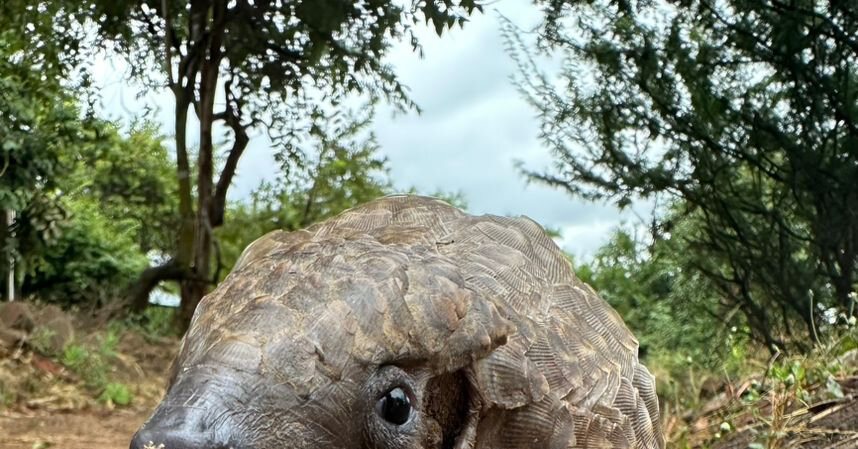Thinking of interesting and useful gifts to buy is not always easy, but charitable organizations around the world have an answer.
“Symbolic gifts, such as the digital adoption of a wild animal or a tiny patch of a landscape, can make a wonderful holiday gift,” Thirzah McSherry, head of development at The Wildlife Trusts in Britain, wrote in an email.
“It’s the gift which keeps on giving,” Ms. McSherry said, “as your loved one will learn about the project and can follow its progress over months and even years.”
Red squirrels, dolphins, butterflies, badgers, barn owls and Highland cattle are among the animals available for adoption through the federation of 46 nature charities, represented by its central organization, The Royal Society of Wildlife Trusts. For example, the Cheshire Wildlife Trust offers the symbolic adoption of a beaver for 3 pounds (almost $4) a month.
And new this holiday season is an appeal for donations, represented in square meter increments, to help The Wildlife Trusts buy the remainder of the Rothbury Estate in Northumberland.
Of course, the Wildlife Trusts is not the only charity or business offering adoption and sponsorship ideas:
Adopt a Coral
Titouan Bernicot was 16 years old in 2015 when he and his friends noticed bleached corals dying at their local surfing spot in French Polynesia and decided they wanted to do something about it.
By 2017, with the help of volunteers and a crowdfunding campaign, Mr. Bernicot had introduced Coral Gardeners, a business and nonprofit organization that offered coral adoptions to support its reef restoration efforts.
“I saw people adopting stars,” he recalled during a recent interview, “and I was like, ‘Wait a minute, we have hundreds of tiny corals’” growing in local lagoons. If he and his friends posted images showing the difference between healthy corals and ailing ones, “maybe people want to sponsor that for $29,” he said. (The price now is $30.)
Since then, Mr. Bernicot estimated, more than 50,000 corals — from a total of 50 different species — have been adopted in French Polynesia, Fiji or Thailand.
Mr. Bernicot and his teams collect coral fragments from resilient coral colonies. These are then tied to ropes and put into underwater nurseries where they are monitored and left to grow to maturity, before being planted back onto the reef.
The adoption photos are taken at the very beginning of the process. And when an adoption is purchased, a digital certificate called a Coral Token is emailed to the recipient, who then receives two updates a year about that specific piece of coral.
“When you see that little coral growing,” Mr. Bernicot said, “and you start seeing some fish and little crabs coming in the coral that people adopt, you really recreate life, you know, you bring back those colors to the reef.”
Adopt an Object
On the ground floor of the Science Museum in London is a 150-year-old toilet, part of the permanent exhibition in its Making the World Modern gallery.
The Optimus water closet was designed by Stevens Hellyer and, while it might not seem like the most giftable of items, it was part of a new Adopt an Object program that the museum introduced in October.
“We’re always looking for ways,” said Glyn Morgan, the museum’s head of collections and principal curator, that visitors “can support us and support our mission to inspire the next generation of people interested in science, technology and engineering and mathematics and medicine.”
Six objects have been offered for adoption: Along with the toilet, there are a Penicillium mold from 1935, a 1913 teddy bear, an antenna disguised as a cactus from 2014, an 1885 safety bicycle and the Enigma cipher machine from 1934. An unlimited number of sponsors will be accepted for each item. Payments begin at £3 a month for 12 months; £5 and £10 options are also available.
Mr. Morgan said the museum staff members held long discussions about which objects should be included. The teddy bear, for example, might appeal to families; the toilet was “something that’s a bit cheeky and a bit of a joke gift almost or, you know, for someone who’s very passionate about their domestic technology,” he said; the Penicillium was “one of our star objects that speaks to a really important moment in scientific development.”
He said the objects had to belong to the museum. So, an exhibit like the Apollo 10 command module from 1969, a popular attraction at the museum, would not be offered because it is on loan from the Smithsonian’s National Air and Space Museum.
The objects may be adopted from anywhere in the world through the museum’s website. Donors will receive a digital adoption certificate and a thank-you message from Mr. Morgan, as well as two personalized emails a year from the Science Museum. And while the museum does encourage donors to visit their adoptees, it does note that “adoption does not include physical access to or handling of the object.”
Other English museums with similar object adoption programs include the Florence Nightingale Museum in London; the Reading Museum, in partnership with the Friends of Reading Museum group in Reading; and the British Motor Museum in Gaydon, Warwickshire.
Adopt an Animal
More than 30 years ago, the Born Free Foundation, a wildlife charity founded by actors in the 1966 movie of the same name, introduced its adoption program. It was “a way for the public to directly support the animals they were fighting to protect,” Olivia Evans, Born Free’s individual giving officer, wrote in an email.
Now the organization, headquartered in the English county of West Sussex, has 12 species of animals available for adoption, including lions, elephants, giraffes, orcas and pangolins. All are linked somehow to the foundation’s welfare, rescue or conservation projects in Kenya, Ethiopia, South Africa and India.
According to Ms. Evans, lions, elephants and giraffes are consistently among the charity’s most frequent adoptions and, recently, pangolin adoption has become especially popular.
Adoptions start at £5 a month, with both digital and mail options available. (Mailed packets include a soft toy of the animal, while digital adoptions ensure that a third more of the fee goes to the charity’s work.)
Other animal adoption programs are offered by organizations such as Jimmy’s Farm & Wildlife Park, an attraction in Ipswich, England, linked to the British TV personality Jimmy Doherty, and the Oceanic Society in Ross, Calif.
Why would such ideas resonate for gifting?
Jen Shang, a psychologist who specializes in philanthropic topics and the co-founder and director of the Institute for Sustainable Philanthropy in Plymouth, England, said people want to believe they are good and to share such beliefs with others.
“So by adopting any of these products,” Dr. Shang said, “they will both have that internal affirmation, ‘I’ve done this, I am a good person,’ and also they have shared that ‘we, together, we’re good people.’ And those are quite innate needs that people have.”
The post Can’t Find the Right Gift? How About Adopting a Pangolin? appeared first on New York Times.




